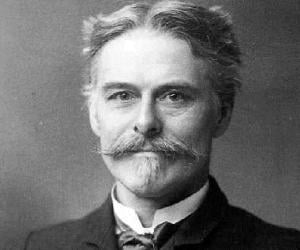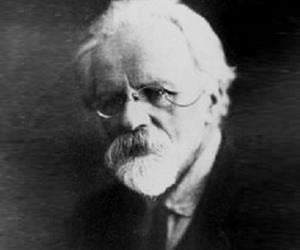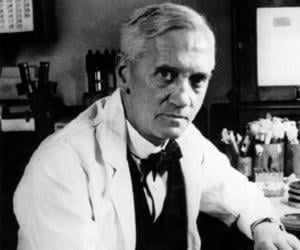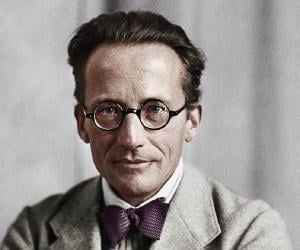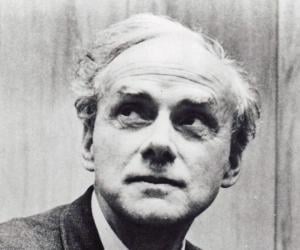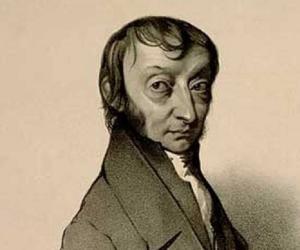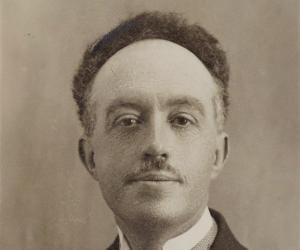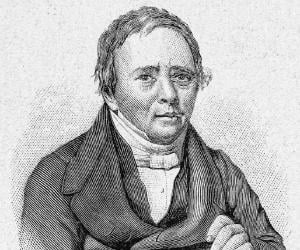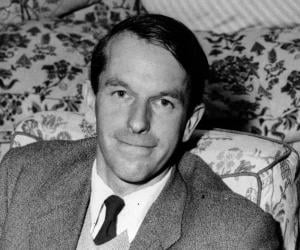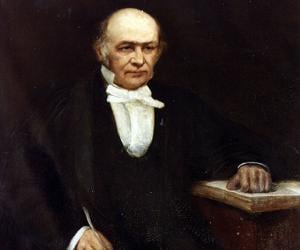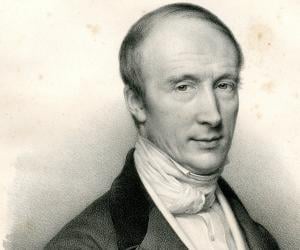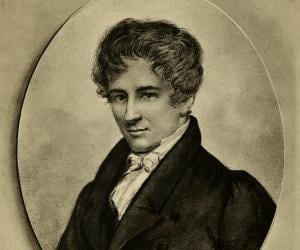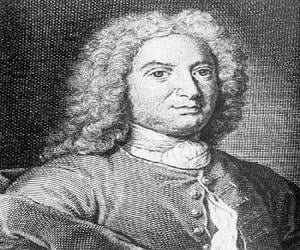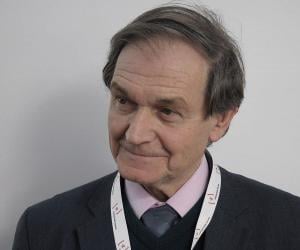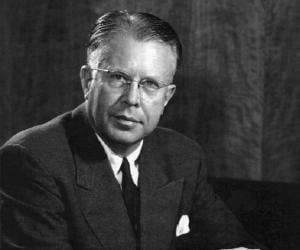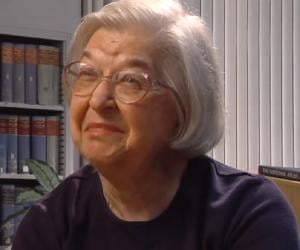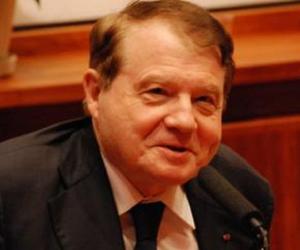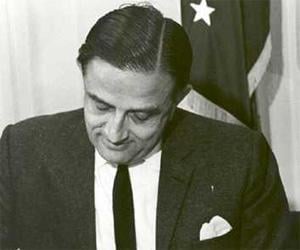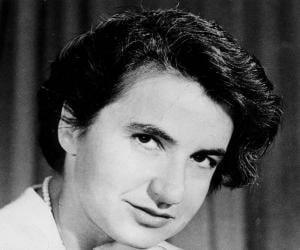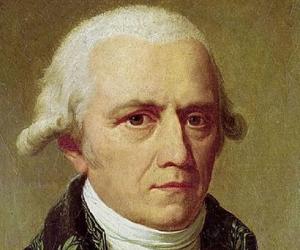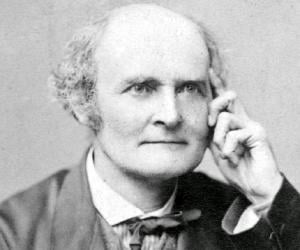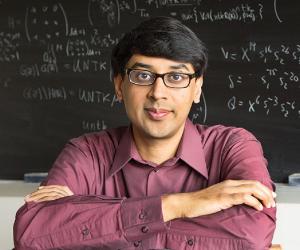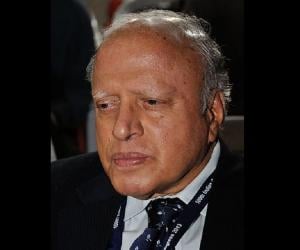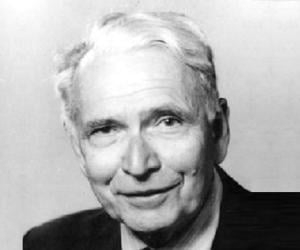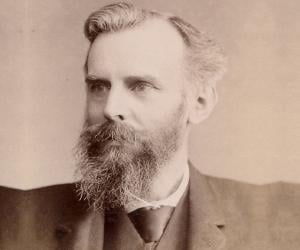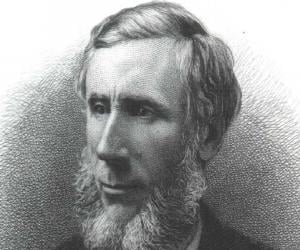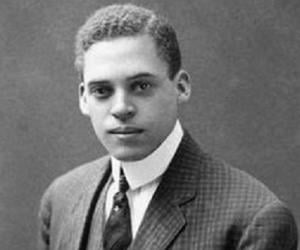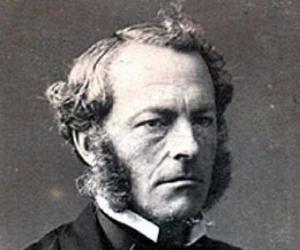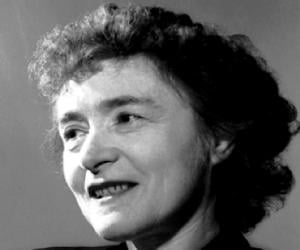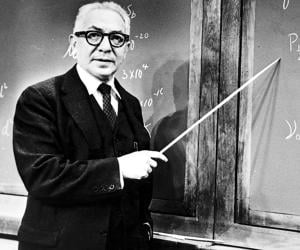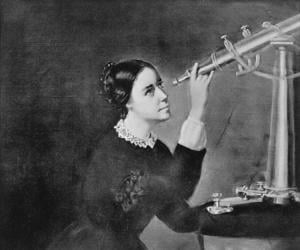Alexander Fleming was a Scottish microbiologist and physician. He is credited with discovering penicillin, the world's first effective antibiotic substance; a discovery that changed the course of history. He also discovered lysozyme, an antimicrobial enzyme which forms part of the innate immune system. In 1999, Fleming was named in Time magazine's 100 Most Important People of the 20th century list.
English theoretical physicist and Nobel laureate Paul Dirac OM FRS, counted among leading physicists of the 20th century, made fundamental contributions in the early development of quantum electrodynamics and quantum mechanics. He derived the Dirac equation while the modern theory of antimatter began with one of his papers. His book The Principles of Quantum Mechanics remains an influential monograph on the subject.
Son of a reputed senator and lawyer in Italy, Amedeo Avogadro was himself a qualified lawyer. However, he later delved into research as a mathematical physicist and is best remembered for laying down the Avogadro’s law, contributing to the molecular theory of gases. The Avogadro constant is named after him.
Louis de Broglie was a French aristocrat and physicist who made important contributions to quantum theory. His de Broglie hypothesis, which suggests that all matter has wave properties, is one of the most important features in the theory of quantum mechanics. In 1929, de Broglie was honored with the Nobel Prize for Physics for his work.
Hans Christian Ørsted was a Danish chemist and physicist. He was the first person to discover that electric currents can be used to create magnetic fields. His discovery was the first relationship found between magnetism and electricity. Oersted, the unit of the auxiliary magnetic field H, is named in his honor.
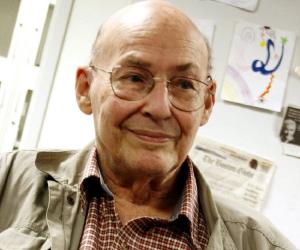
Frederick Sanger remains one of only two people to have won the Nobel Prize twice in the same category. The British biochemist is remembered for his ground-breaking work on nucleic acids and the insulin molecule. The son of a Quaker medical missionary, Sanger, too, grew up believing in Quakerism.
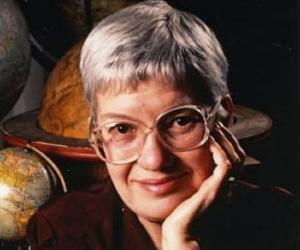
American astronomer Vera Rubin is best known for her pioneering discoveries on galaxy rotation rates, her groundbreaking work confirming the existence of dark matter and for her life-long advocacy for women in science. She studied the galactic rotation curves and provided strong evidence of the existence of dark matter. The Vera C. Rubin Observatory in Chile is named after her.
Son of a Dublin solicitor, Sir William Rowan Hamilton was raised and educated by his priest uncle from age 3. Initially a master of languages such as Latin, Greek, and Persian, Hamilton began deviating to math at 16. He is remembered for his contribution to optics, Hamiltonian mechanics, and algebra.
French mathematician Augustin-Louis Cauchy was initially a military engineer. In his early days, he and his family escaped the Reign of Terror and settled in Arcueil. He was one of the pioneers of mathematical analysis and made significant contributions to subjects such as error theory, calculus, and complex functions.
Born to a pastor, Norwegian mathematician Niels Henrik Abel first showcased his mathematical skills in his cathedral school and later became a pioneer of various mathematical concepts. He died of tuberculosis, amid poverty, before he could learn that he had been appointed to teach at the University of Berlin.
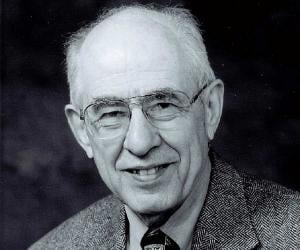
Brother and colleague of Swiss mathematician Jacob Bernoulli and part of the famous Bernoulli family of mathematicians, Johann Bernoulli was initially pushed to join his family business of drug and spices. He later took up medicine, eventually deviating to math and contributing to infinitesimal calculus, along with Jacob.
Roger Penrose’s contribution to the research related to the black hole and general relativity earned him the Nobel Prize in Physics in 2020. The Emeritus Rouse Ball Professor of Mathematics at Oxford, Roger is also a fellow of Wadham College, St John's College of Cambridge, and University College London.
Stephanie Kwolek was an American chemist remembered for her invention of Kevlar. She worked at the DuPont Company for over four decades and was awarded the company's Lavoisier Medal for her discovery. In 1995, she was inducted into the National Inventors Hall of Fame, becoming the fourth woman to be inducted. She also won other awards including the Perkin Medal.
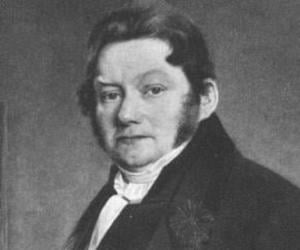
Jöns Jacob Berzelius was a Swedish chemist who is often counted among the founders of modern chemistry alongside Robert Boyle, Antoine Lavoisier, and John Dalton. He is also referred to as the Father of Swedish Chemistry. Jöns Jacob Berzelius is also credited with making immense contributions to the field of stoichiometry. In 1836, he was honored with the Copley Medal.
French virologist Luc Montagnier is known for discovering the human immunodeficiency virus (HIV) which led him to jointly receive the 2008 Nobel Prize in Physiology or Medicine. Montagnier also made headlines promoting controversial and unverified claims related to vaccinations, homeopathy and COVID-19 pandemic, which he argued as man-made and possibly a result of an attempt to create an HIV/AIDS vaccine.
Padma Bhushan- and Padma Vibhushan-winning Indian scientist Vikram Sarabhai was born into the famous Sarabhai family of industrialists who were associated with the Indian Independence Movement. He made major contributions to India’s nuclear power and space research initiatives, developed textile research in India, and helped set up IIM-Ahmedabad.

Better known as former U.S. president Donald Trump’s uncle, John G. Trump was an MIT physicist and engineer. Though he had initially aspired to be an architect and join his brother Fred’s real-estate business, John later concentrated on his research that led to the invention of high-voltage generators.
French biologist Jean-Baptiste Lamarck acquired his love for plants while serving as a soldier in the French army. Following an injury, he quit his military career but retained his love for botany. He later taught zoology, studied the classification of invertebrates, and also coined the term biology.
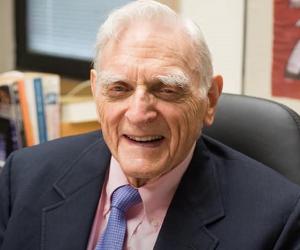
John B. Goodenough is an American solid-state physicist and materials scientist. He is credited with developing the lithium-ion battery. In 2019, he became the oldest person to receive a Nobel Prize when he was honored with the prestigious award for his work on lithium-ion batteries. He is also a recipient of the Copley Medal and the National Medal of Science.
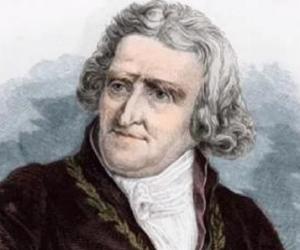
While in prison, in the aftermath of the Seven Years’ War, army pharmacist Antoine-Augustin Parmentier was forced to eat potatoes, which were considered fit only for prison ration and animal feed back then. Parmentier later persuaded the Paris Faculty of Medicine to declare potatoes edible and popularized them in France.
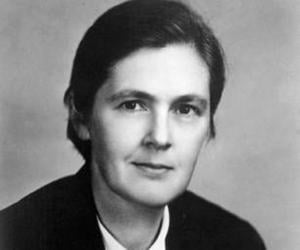
As part of the FDA, Frances Oldham Kelsey prevented thalidomide from being allowed in the US drug market as a painkiller, as she was unsure of its impact. Her concerns were proved right when the drug caused birth defects in European children. She was subsequently awarded by the US president.
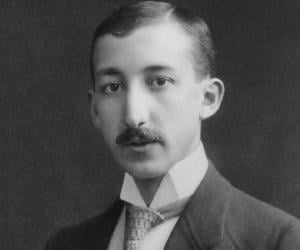
Nobel Prize-winning Hungarian-Swedish chemist George de Hevesy is best remembered for his research on isotopic tracer techniques to study animal metabolism. He is also credited with co-discovering the element hafnium with physicist Dirk Coster. He fled the Nazi regime and moved first to Denmark and then to Sweden.
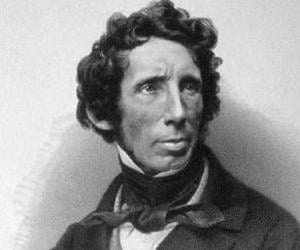
Friedrich Wöhler was a German chemist best remembered for his contribution to the field of inorganic chemistry. He was the first person to isolate the chemical elements yttrium and beryllium in pure metallic form. Friedrich Wöhler was also the first person to prepare many inorganic compounds such as silicon nitride and silane.
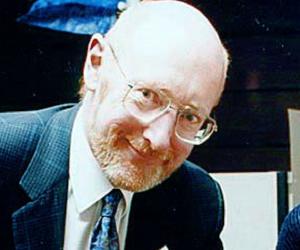
A consumer electronics pioneer, entrepreneur Clive Sinclair began his business venture selling radio and amplifier kits. He went on to launch the word’s first pocket calculator and later also worked on products such as digital watches and pocket TV. He is a fan of poker and is a Mensa member.

Renowned James Lovelock is best known for propagating the Gaia hypothesis, which states that every living being on planet Earth is part of a single self-regulating superorganism. He is also known for his long association with NIMR, London, and Harvard University and has over 50 patents under his name.
Ramon Magsaysay Award-winning geneticist M. S. Swaminathan is best known for his contribution to the Indian Green Revolution. Featured on Time, he introduced high-yielding varieties of wheat and rice seedlings to Indian farmers. He is also known for his administrative work as part of the Indian civil services.
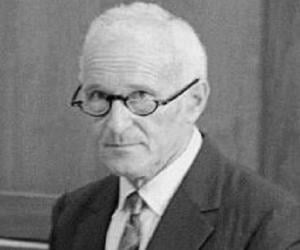
Sidney Gottlieb was an American spymaster and chemist who played a major role in the CIA's mind-control program and assassination attempts during the 1950s and 1960s; the illegal human experimentation program which he headed was called Project MKUltra.
Erwin Chargaff was a biochemist and writer who worked at the Columbia University medical school as a professor of biochemistry. He is credited with discovering the Chargaff's rules, which played an important role in the discovery of the DNA's double helix structure. Also a prolific writer, Erwin Chargaff authored several books, including an autobiography.
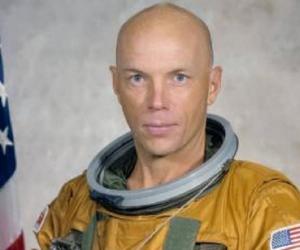
US physician and astronaut Story Musgrave initially worked for the US Marine Corps. Before joining NASA, he gained a host of degrees, in subjects such as literature, math, and chemistry, and an MD from Columbia University. He became the 2nd astronaut to make 6 space flights and later worked for Imagineering and Applied Minds.
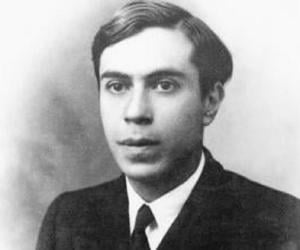
Ettore Majorana was immensely talented in math and grew up to be a theoretical physics professor. He also worked on neutrino masses but abruptly disappeared while on a ship from Palermo to Naples. People have come up with theories such as suicide and murder to explain his disappearance.
Born into a poor Protestant family, Irish physicist John Tyndall was a self-made man who funded his own doctoral education. His contributions include his research on the greenhouse effect and the discovery of the Tyndall effect. Not known to many, he was also an avid mountaineer and glaciologist.
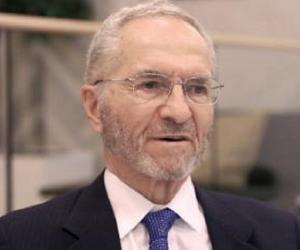
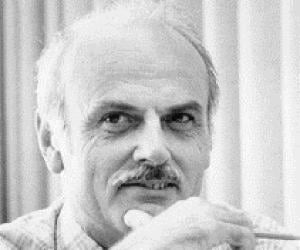
Turing Award-winning computer scientist Edgar F. Codd is best remembered for his relational data model, which contributed to the development of the relational database used in storing and retrieving computer data. An Oxford graduate, he had also worked for the army during World War II.
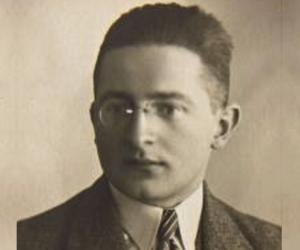
Polish mathematician-cryptologist Marian Rejewski is noted for reconstructing the sight-unseen German military Enigma cipher machine and solving Enigma-machine cipher using limited documents that the French military intelligence managed to obtain. He and his colleagues developed and applied methods and equipment for decrypting the German machine ciphers which gave Britain an opportunity to read German Enigma-encrypted messages during Second World War.
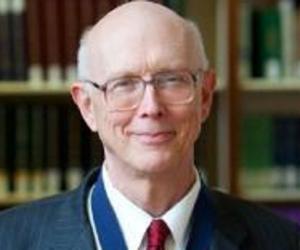
Ernest Everett Just was an African-American biologist and academic. He is credited with recognizing the fundamental role of the cell surface in the development of organisms. As a black boy growing up in the late 19th century, he had to face enormous challenges before he could establish himself in his career. He co-founded the Omega Psi Phi Fraternity, Inc.
Sir George Stokes, 1st Baronet was an Anglo-Irish physicist and mathematician. He studied at Pembroke College, Cambridge, and spent his entire career at the University of Cambridge as the Lucasian Professor of Mathematics. As a physicist, he made key contributions to fluid mechanics and physical optics. He received the Royal Society's Copley Medal in 1893.
Austro-Hungarian-American biochemist Gerty Cori is best-known for discovering the course of catalytic conversion of glycogen with her husband Carl Ferdinand Cori for which they jointly won the 1947 Nobel Prize in Physiology or Medicine. With this Gerty became the third woman to win a Nobel in science and the first to win it in this category.
